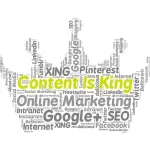In the world of content marketing, there’s a longtime misunderstanding even greater than the mislabeling of big data. I’m talking about demand generation and lead generation – two terms which are all too often used interchangeably. The truth is that they’re two very different approaches to content creation – and using the wrong one can mean a whole lot of wasted effort on your part.
Perhaps we shouldn’t get too far ahead of ourselves. Let’s start with an explanation of the difference between demand generation and lead generation. That’ll help us explain why the two are so often mixed up with one another, in addition to giving us a springboard into a discussion on optimization.
What Is Demand Generation?
Demand generation is exactly what it sounds like – it’s the process of raising awareness of an organization’s products and services, and creating demand through that awareness. You’re going out of your way to generate buzz about your company; to get people talking about you and make them more aware of you. The end result is that prospective customers are far likelier to come and check your business out – and far likelier to choose your brand over a competitor.
“Ultimately,” writes Ritika Puri of Hubspot, “demand generation captures the umbrella of marketing programs that get customers excited about your company’s products and services. Demand generation programs can help your organization reach new markets, promote new product features, build consumer buzz, generate PR, and re-engage existing consumers.”
Simple enough, right?
What Is Lead Generation?
Here’s where things get a little tricky. Just like demand generation, lead generation is all about generating brand awareness; that’s likely the reason the two terms are often lumped together. The difference lies in intent. See, unlike demand generation, lead generation is all about collecting information (leads) from interested parties.
In essence, it’s about building a marketing database.
“Lead generation,” reads the preface to a Nurture infographic on the subject, “is defined as the generation of consumer interest or inquiry into products or services of a business. Leads can be generated for purposes such as list building, e-newsletter list acquisition or for sales leads.”
“In simple words,” it continues, “lead generation is the process of creating sales leads which might convert into sales for the company.”
I’d highly recommend checking that infographic out, by the way – it does a pretty fantastic job of demonstrating the general differences between lead generation and demand generation.
How Do The Two Relate To Content Marketing?
Now that we’ve got a working definition of both lead generation and demand generation – along with an understanding of what makes each distinct from the other – it’s time to bring the discussion back around to content marketing. Specifically, let’s talk about optimization. How exactly is content optimized for lead generation different from content optimized for demand generation?
It’s a simple distinction, if a remarkably subtle one. The basics of SEO remain the same in both cases. Again, we’re looking at intent here – with demand generation, your aim is to create demand for your company’s offerings; in the case of lead generation, you want to create demand for the content itself.
“Lead generation focuses on the content being offered,” explains digital marketer Eric Wittlake. “Your messaging, promotions, and navigation paths are focused on funneling individuals into a registration path to access that content.”
“Demand generation,” continues Wittlake, “focuses on creating demand for your category or your specific products or services. Content educates your audience, shapes their perspective and positions your offerings.”
The prime difference here, explains Wittlake, is that demand-generating content needs to be widely and broadly distributed, while lead-generating content is usually gated in some fashion. He further warns that trying to do both at the same time can lead to a watered-down, unsuccessful marketing campaign where one achieves neither leads nor demand. Successful content marketing ultimately requires a focus on either demand or leads.
In Closing – Two Sides Of The Same Coin
In spite of all their differences, there are many areas in which lead generation and demand generation are remarkably similar. Oddly enough, content marketing is one of them. Though certain types of content are better at generating leads (newsletters, ebooks, and whitepapers), and others are better at generating demand (infographics, targeted blog posts, topical pieces), the way one gets the word out about that content will largely remain the same.
Whether you’re aiming to generate leads or generate demand, you’re going to need a formidable grasp of SEO. You’ll need to understand your audience and their needs, and inject a strong voice into everything and anything you write. Finally, you’ll need great content.
Without that, it doesn’t matter what your focus is.



